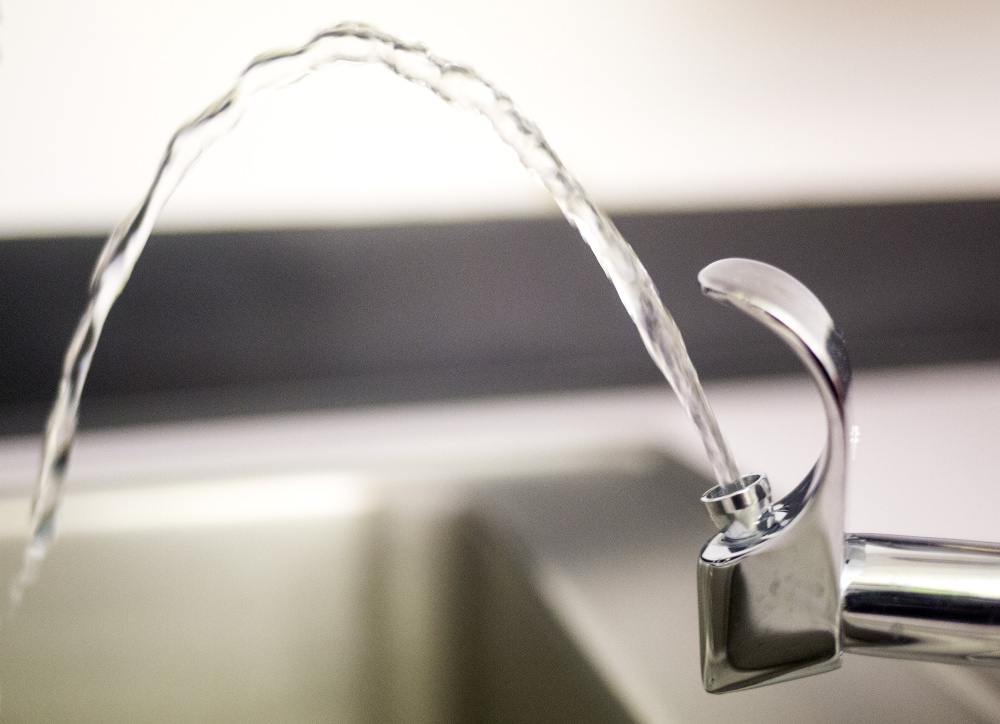There was a hearing Tuesday at the State House, but the real audience wasn’t the legislators around the committee table — it was any Maine school that does not test its water regularly.
The hearing was on L.D. 153, which would require schools to test its water for lead. The roughly 240 schools on well water already must test at least once every three years, but the 550 or so schools on municipal water systems don’t.
Many already do, particularly after the high-profile problems with contaminated water in Flint, Michigan. After that city’s problems were revealed, at least two Maine schools on public water found elevated levels of lead, spurring even more testing throughout the state.
But not every school regularly tests its water, some because municipal water systems are tested so thoroughly as a matter of course.
That can provide a false sense of security for schools — while the water coming into the school may be fine, pipes and solder used in older school buildings may contain lead, which can leach it into the school’s drinking water.
And tests must be regular, as water wears away on pipes over time, meaning faucets that put out perfectly good water one day can still become an issue later on.
Where lead does appear, it is not a Flint-level catastrophe. The high levels of lead, where they are found at all, are usually only present in water coming out of some faucets, and then often on “first draw,” when the water has sat motionless in pipes for a while.
But it is still unhealthy for growing bodies and developing brains, and repeated exposure to even low levels of lead can cause learning and development disabilities, behavioral problems and a number of physical ailments.
As one advocate at Tuesday’s hearing put it, lead is a “entirely preventable source of harm to children’s brains.” That’s why both New York and New Jersey require testing, and Massachusetts puts school testing results on its state website.
Following the problems in Flint, Maine established a program to give free testing to schools that requested it. But after a lot of initial requests, there are signs that interest is waning, and the state estimates around 300 schools have not taken them up on the offer.
Unfortunately, that’s not uncommon. A report by the federal Government Accountability Office found that 41 percent of school districts nationwide had not tested for lead in the past year.
But when they do, more than 40 percent of schools find a faucet with levels of lead that exceed recommended minimums. The GAO study found that 37 percent of school districts found elevated levels of lead in students.
Those statistics show why L.D. 153 is necessary — a gentle nudge has not been enough to get schools to do the proper testing, and a student’s exposure to harmful contaminants shouldn’t depend on where he or she goes to school.
Recalcitrant schools need a harder push to conduct regular testing. L.D. 153 would allow the Department of Health and Human Services to mandate water testing and ensure schools follow up with whatever abatement is warranted.
It shouldn’t take a law to make sure a school is safe; it is one of the basic duties of a school district, and in this case it can be accomplished with a cheap and easy test.
But if so many schools are falling short in that duty, the Legislature has no choice but to act.
Send questions/comments to the editors.



Success. Please wait for the page to reload. If the page does not reload within 5 seconds, please refresh the page.
Enter your email and password to access comments.
Hi, to comment on stories you must . This profile is in addition to your subscription and website login.
Already have a commenting profile? .
Invalid username/password.
Please check your email to confirm and complete your registration.
Only subscribers are eligible to post comments. Please subscribe or login first for digital access. Here’s why.
Use the form below to reset your password. When you've submitted your account email, we will send an email with a reset code.